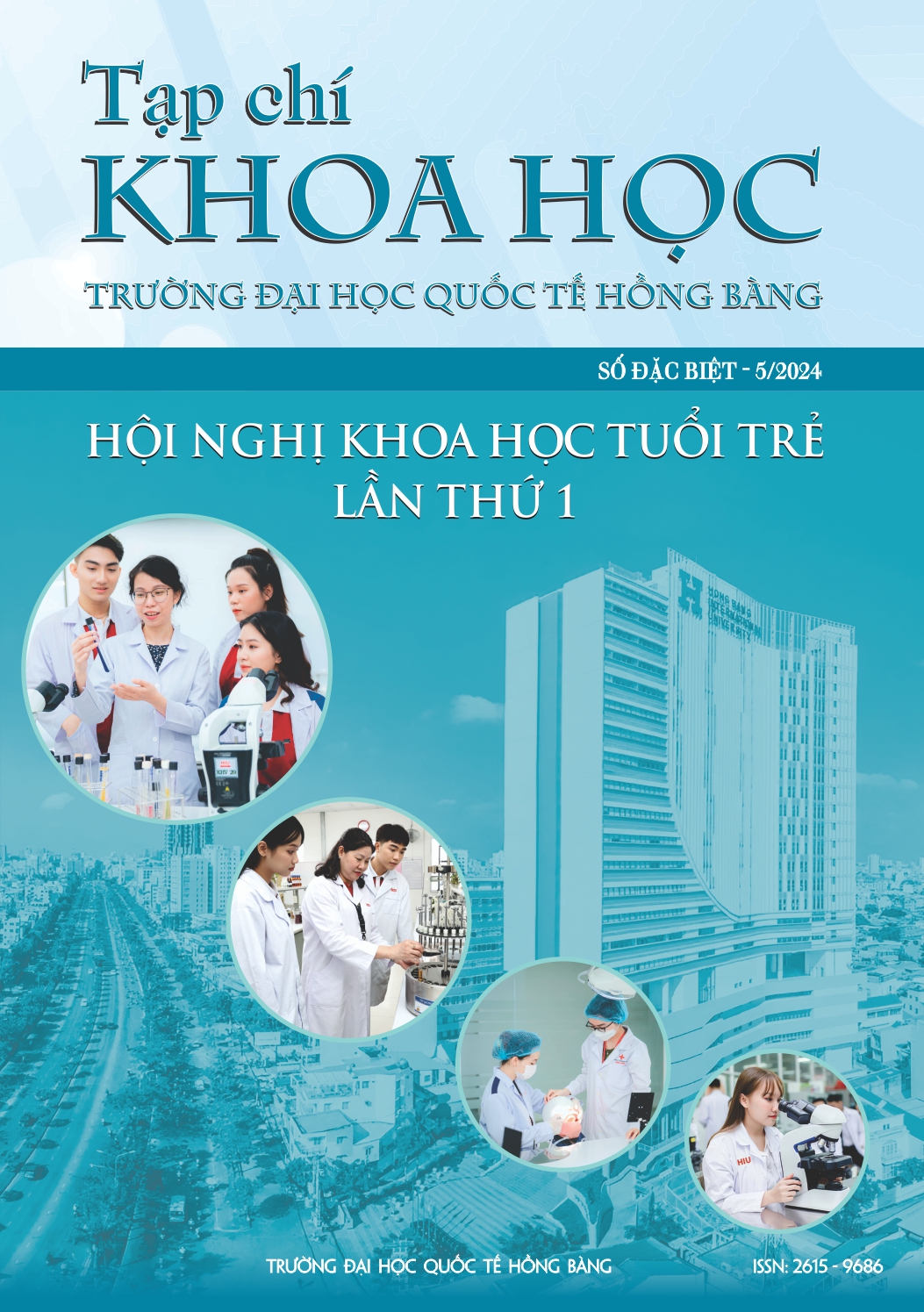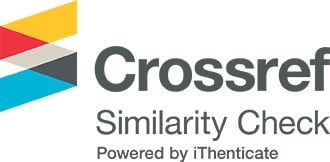QUY TRÌNH CHIẾT XUẤT CAO CÚC ÁO HOA VÀNG (SPILANTHES ACMELLA MURR. ASTERACEAE)
Các tác giả
DOI: https://doi.org/10.59294/HIUJS.KHTT.2024.037Từ khóa:
cao Cúc áo hoa vàng, Spilanthes acmella Murr. Asteraceae, polyphenol, chiết xuấtTóm tắt
Đặt vấn đề: Việc bào chế sản phẩm trung gian từ dược liệu như cao đặc, cao khô hoặc bột đang dần được quan tâm nhiều hơn. Mục tiêu: Nghiên cứu này được tiến hành nhằm mục đích xây dựng được phương pháp và quy trình chiết xuất để bào chế cao Cúc áo hoa vàng (Spilanthes acmella Murr. Asteraceae) có hàm lượng phenolic cao đạt tiêu chuẩn để làm chế phẩm trung gian điều chế các dạng thuốc khác. Phương pháp nghiên cứu: Dược liệu Cúc áo hoa vàng toàn thân trên mặt đất được phơi khô, xay thô và chiết bằng các phương pháp khác nhau với các thông số khảo sát: dung môi, nhiệt độ, thời gian, tỷ lệ dược liệu/dung môi. Hàm lượng phenolic trong cao được xác định bằng phương pháp Folin – Ciocalteu. Kết quả: Xây dựng được quy trình chiết xuất cao Cúc áo hoa vàng với hàm lượng polyphenol 33.11 ± 0.19 mgGA/g bằng phương pháp đun hồi lưu với dung môi ethanol 80%, nhiệt độ 70 °C, thời gian 120 phút/lần x 3 lần, tỷ lệ dược liệu/dung môi là 1/8 g/mL. Hiệu suất chiết suất đạt 15.70 ± 0.44%. Kết luận: Quy trình chiết xuất cao Cúc áo hoa vàng được nghiên cứu thành công, phù hợp với điều kiện sản xuất ở Việt Nam và có thể ứng dụng vào thực tiễn.
Abstract
Introduction: The preparation of intermediate products from medicinal herbs such as concentrated extract, dry extract or powder is gradually receiving more attentions. Objectives: This study was conducted to develop an extraction method and process for the preparation of Spilanthes acmella extract which contained high phenolic content. The concentrated extract meets the in-house standards and can be used as an intermediary products for formulating other forms of drugs. Methods: the whole - body medicinal herb of yellow flower daisies on the ground was dried, grinded and extracted by different methods with the investigated parameters: Solvent, temperature, extraction time and powder-to-solvent ratios. The phenolic content was determined by Folin – Ciocalteu method. Results: Developed a process to extract yellow daisy with polyphenol content of 33.11 ± 0.19 mgGA/g reflux method with 80% ethanol, 70 °C, 120 mintues/time x 3 times, and the powder-to-solvent ratio is 1/8 g/mL. The efficiency extraction reaches 15.70 ± 0.44%. Conclusion: The study established the extraction process of yellow daisy extract. The process was found to be suitable for the available manufacturing conditions in Vietnam.
Tài liệu tham khảo
[1] J.Boonen, B.Baert, N.Roche, C.Burvenich, B.De Spiegeleer, “Transdermal behavior of the N-alkylamide spilanthol (affinin) from Spilanthes acmella (Compositae) extracts”, Journal of Ethnopharmacology, Vol. 127. No. 1. pp. 77-84. 2010.
DOI: https://doi.org/10.1016/j.jep.2009.09.046[2] S.S. Nipate∗ and A.H. Tiwari, “Antioxidant and immunomodulatory properties of Spilanthes oleraceae with potential effect in chronic fatigue syndrome infirmity”, Journal of Ayurveda and Integrative Medicine, Vol. 11. No. 2. pp. 124-130. 2020.
DOI: https://doi.org/10.1016/j.jaim.2017.08.008[3] R.A. Rahim, P.A. Jayusman, N. Muhammad, N. Mohamed, “Potential Antioxidant and Anti-Inflammatory Effects of Spilanthes acmella and Its Health Beneficial Effects: A Review”, Vol. 18. No. 7. pp. 3532. 2021. DOI: 10.3390/ijerph18073532
DOI: https://doi.org/10.3390/ijerph18073532[4] M. Bellumori, B. Zonfrillo, V. Maggini,…, M. Innocenti, “Acmella oleracea (L.) R.K. Jansen: Alkylamides and phenolic compounds in aerial parts and roots of in vitro seedlings”, Journal of Pharmaceutical and Biomedical Analysis, Vol. 220. 2022. DOI: 10.1016/j.jpba.2022.114991
DOI: https://doi.org/10.1016/j.jpba.2022.114991[5] N.T.T. Thuỷ, “Góp phần tìm hiểu thành phần hoá học của cây cúc áo Spilanthes acmella.L.Murr họ cúc Asteraceae”, luận văn Thạc sĩ ngành Hóa hữu cơ, Trường ĐH Khoa học Tự nhiên – ĐHQG Tp Hồ Chí Minh, 1999.
[6] RM. Lamuela-Raventós, “Folin - Ciocalteu method for the measurement of total phenolic content and antioxidant capacity”, Measurement of antioxidant activity & capacity: Recent trends and applications, R. Apak, E. Capanoglu, F. Shahidipp. John Wiley & Sons Ltd.. 2017. pp. 107-115. DOI:10.1002/9781119135388
DOI: https://doi.org/10.1002/9781119135388.ch6[7] T. tâm D. điển – D. thư V. N. Hội đồng Dược điển Việt Nam, Dược điển Việt Nam V, Nhà xuất bản Y học, 2017
[8] T. Mallikarjuna Rao, B. Ganga Rao, Y. Venkateswara Rao, “Antioxidant activity of Spilanthes acmella extracts”, International Journal of Phytopharmacology, Vol. 3. No. 2. pp. 216-220. 2012.
Tải xuống
Tải xuống: 488











